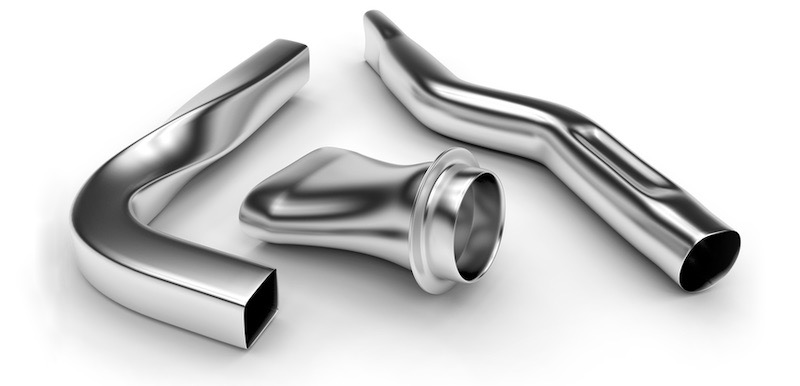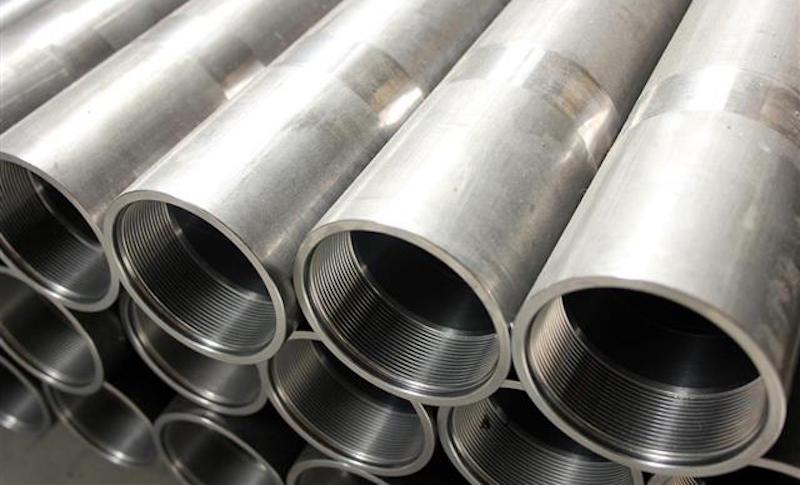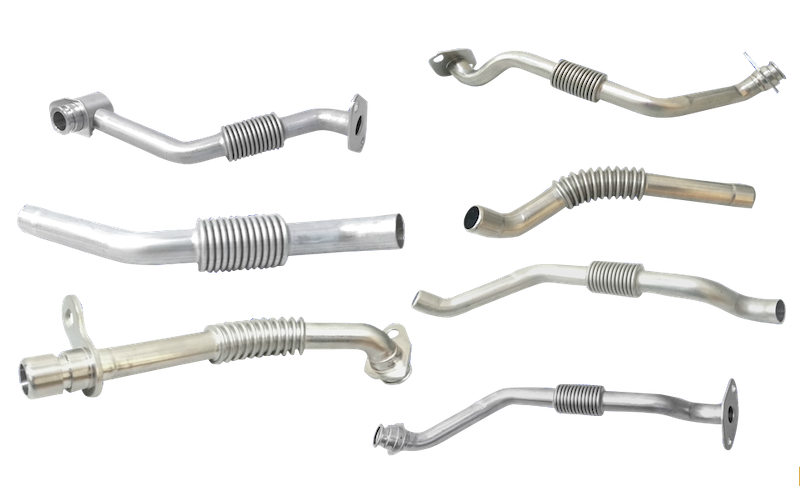Frequently Asked Hydroforming Questions
Hydroforming is a unique process, so a lot of people don’t quite understand it. To help you understand hydroforming better, we put together this FAQ guide. If you have a more specific question that wasn’t addressed in this guide, please contact us. We’re always happy to answer your questions.
1. What Is Hydroforming?

Hydroforming is a technique that offers an alternative to sheet metal stamping. It involves using high-pressure hydraulic fluid to shape malleable metal like aluminum or steel. There are two common types of hydroforming:
- Tube hydroforming (with metal tubing)
- Sheet hydroforming (with sheet metal)
Hydroforming is an ideal solution for those who are looking to make parts with complex shapes. For example, a tube can have square openings at both ends and a corrugated design in the middle. Such a design can be difficult or impossible to pull off with traditional methods, but experts like Intran frequently work with tube hydroforming projects.
2. What Is The Hydroforming Process Like?
The hydroforming process is pretty straightforward. A machine called a hydroforming press is central to the process, which goes like this:
- A custom die (also called a mold) is installed in the hydroforming press.
- A piece of metal is placed in the die.
- High-pressure hydraulic fluid presses the metal into the die. This forms the metal into the desired shape.
In simple terms, hydroforming is a process that uses high-pressure hydraulic fluid to shape metal.
3. How Does A Hydroforming Press Work?
Here’s a visual representation of how a hydroforming press works (with sheet metal):
Although Intran doesn’t work with a sheet metal press, we wanted to share information about this process. A hydroforming press is a large stand-alone machine. It uses high-pressure hydraulic fluid to press a piece of metal into any shape you want. You will need to add a custom die (mold) to the machine for the metal to achieve the right shape.
4. What Is Sheet Hydroforming?

Sheet hydroforming is common in the automotive industry, but not an Intran specialty. Manufacturers use sheet hydroforming to manufacture a variety of parts, including:
- Exterior body parts, such as hoods or roofs
- Muffler components
- Interior door shells
We used automotive parts as examples because most people are familiar with them. But sheet hydroforming is also used in many other industries, ranging from aerospace to appliance manufacturing.
The sheet metal hydroforming process involves using a die. The machine uses high-pressure hydraulic fluid to press a flat piece of sheet metal into the die. This process molds the sheet metal to precise dimensions. Some of the most common metals used in sheet hydroforming are:
- Aluminum
- Stainless steel
- Copper
- Steel
- Brass
5. What Is Tube Hydroforming?

Tube hydroforming is a technique that uses water or hydraulic fluid to bend or expand tubes. Tube hydroforming is quite like sheet metal hydroforming, but it uses two dies to create a mold.
To begin, a tube is inserted into the hydroforming machine. There’s a negative mold (die) with the desired shape inside the machine. Next, the machine pumps hydraulic fluid into the tube. This is done at pressures of approximately 15,000 to 30,000 psi. This creates enough force to expand the tube to fit the die and achieve the intended shape.
In the automotive industry, tube hydroforming is used to make:
- Engine cradles
- Instrument panel supports
- Radiator supports
- Frame rails
At Intran, we specialize in tube hydroforming for smaller and more intricate parts, like:
- Tubing for liquid exchange for complex areas within the motor
- Tubing to reduce vibration
Tube hydroforming is also used to make parts for many other industries. One of the more visible tube hydroformed components you may have seen are high-end bicycle frames.
Here’s a comprehensive write-up on tube hydroforming and how the process works.
6. What Are The Benefits Of Hydroforming?

Hydroforming brings many different benefits. Let’s talk about the biggest benefits:
- Stronger parts: Since there are no seams, hydroformed parts are in one piece. That means they’re stronger than parts made with other conventional methods.
- Precise fitment: Before the invention of hydroforming, it was almost impossible to create complex parts with precise dimensions.
- Less waste: There’s very little human error involved in the process. That means there’s less waste from dented or accidentally bent parts. There’s also less material required to join the sections into one assembly.
- Lightweight parts: Before the invention of hydroforming, it was very difficult to achieve stiffness with thinner walls. Hydroforming makes it possible to produce lightweight parts that are still strong.
7. Is Hydroforming Affordable?
Yes. Hydroforming is affordable compared to other methods. It’s a cost-effective method because:
- It’s a fast and automated process.
- A single process can produce a complex part that would otherwise involve several manufacturing processes to create
- There’s less waste.
- Less tooling is needed.
- Less welding is needed.
If you need to have a part made, it’s worth asking the manufacturer about hydroforming. It’s one of the most affordable options and it produces great results.
Hydroforming At Intran

At Intran, we use top-of-the-line hydroforming machinery to create all kinds of parts. No project is too complex for us. Please contact us if you’d like to learn more about our tube and sheet hydroforming services.
Note: At Intran, we’re excited to have added tube hydroforming with bellows/corrugates to our extensive list of services. We hope to add other hydroforming options in the near future but at the present can only offer tube hydroforming with bellows/corrugates.
